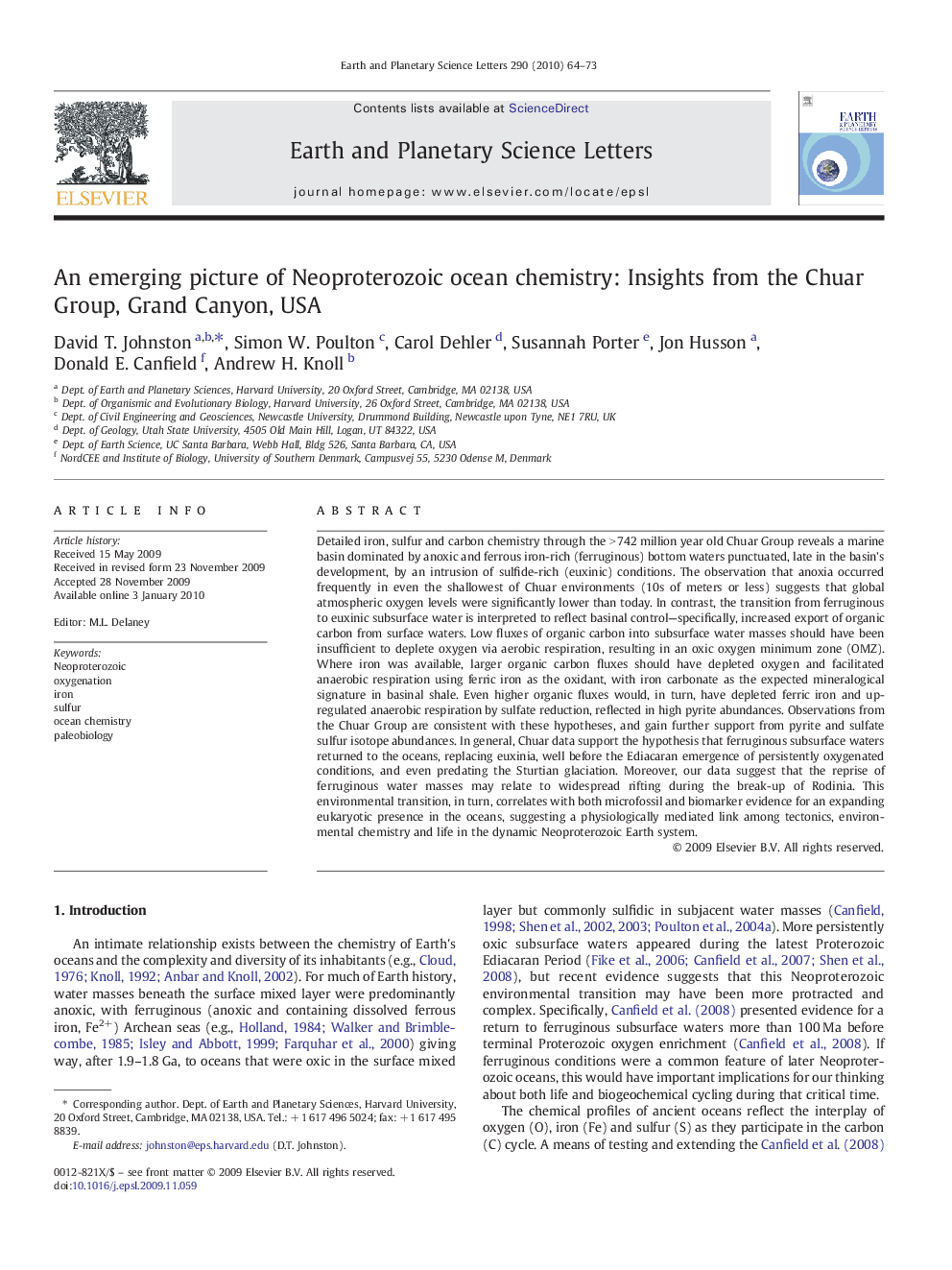| کد مقاله | کد نشریه | سال انتشار | مقاله انگلیسی | نسخه تمام متن |
|---|---|---|---|---|
| 4678712 | 1634859 | 2010 | 10 صفحه PDF | دانلود رایگان |

Detailed iron, sulfur and carbon chemistry through the > 742 million year old Chuar Group reveals a marine basin dominated by anoxic and ferrous iron-rich (ferruginous) bottom waters punctuated, late in the basin's development, by an intrusion of sulfide-rich (euxinic) conditions. The observation that anoxia occurred frequently in even the shallowest of Chuar environments (10s of meters or less) suggests that global atmospheric oxygen levels were significantly lower than today. In contrast, the transition from ferruginous to euxinic subsurface water is interpreted to reflect basinal control—specifically, increased export of organic carbon from surface waters. Low fluxes of organic carbon into subsurface water masses should have been insufficient to deplete oxygen via aerobic respiration, resulting in an oxic oxygen minimum zone (OMZ). Where iron was available, larger organic carbon fluxes should have depleted oxygen and facilitated anaerobic respiration using ferric iron as the oxidant, with iron carbonate as the expected mineralogical signature in basinal shale. Even higher organic fluxes would, in turn, have depleted ferric iron and up-regulated anaerobic respiration by sulfate reduction, reflected in high pyrite abundances. Observations from the Chuar Group are consistent with these hypotheses, and gain further support from pyrite and sulfate sulfur isotope abundances. In general, Chuar data support the hypothesis that ferruginous subsurface waters returned to the oceans, replacing euxinia, well before the Ediacaran emergence of persistently oxygenated conditions, and even predating the Sturtian glaciation. Moreover, our data suggest that the reprise of ferruginous water masses may relate to widespread rifting during the break-up of Rodinia. This environmental transition, in turn, correlates with both microfossil and biomarker evidence for an expanding eukaryotic presence in the oceans, suggesting a physiologically mediated link among tectonics, environmental chemistry and life in the dynamic Neoproterozoic Earth system.
Journal: Earth and Planetary Science Letters - Volume 290, Issues 1–2, 15 February 2010, Pages 64–73